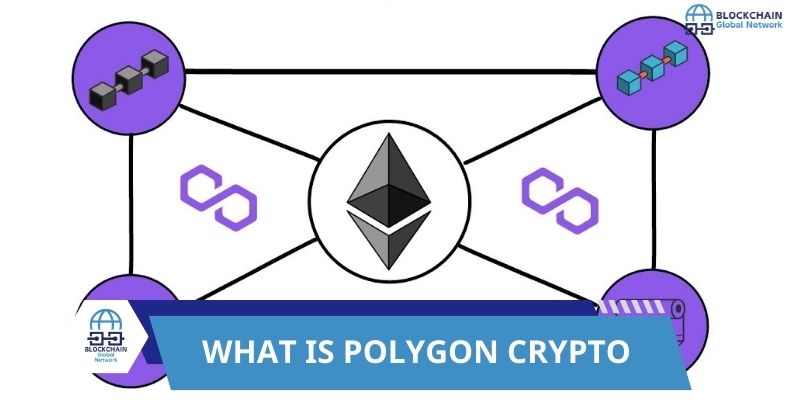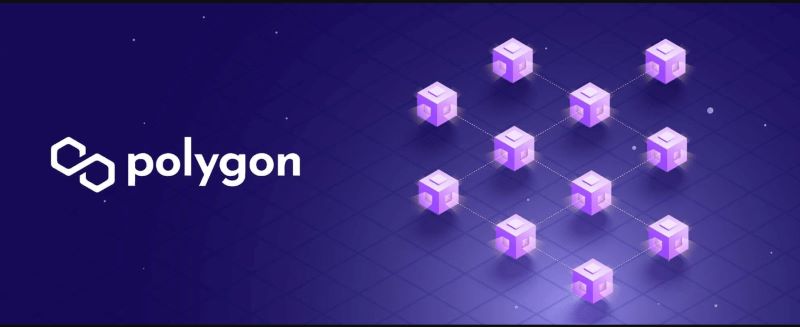What is polygon crypto? It is a groundbreaking layer 2 scaling solution designed to enhance the Ethereum blockchain’s performance. This exploration will uncover how Polygon revolutionizes the way we interact with Ethereum and its growing array of applications.
What is polygon crypto?
Polygon is a scaling solution for the Ethereum blockchain, allowing developers to build and deploy decentralized applications (dApps) more easily while improving transaction speeds and reducing costs. For those unfamiliar with this technology, the question “What is Polygon crypto?” is a common starting point. Let’s delve into its key features.

Key features of Polygon:
- Layer 2 Solution: Polygon operates as an additional layer on top of the Ethereum network, enabling transactions to occur on its own network and then be settled on Ethereum. This helps reduce the load on the main network and improves overall performance. This Layer 2 functionality is a core aspect of what is Polygon crypto.
- Compatibility: Polygon is compatible with existing Ethereum technologies and standards, allowing developers to easily migrate or build new applications without significant changes to their current structure. This compatibility is another crucial feature of what is Polygon crypto, making it an attractive option for Ethereum developers.
- Fast Transaction Speeds: Thanks to its optimized confirmation mechanism and structure, Polygon can process millions of transactions per second, providing a smoother user experience. This high throughput is one of the key reasons why people are asking, “Why is Solana going up?” – a question that highlights the growing interest in fast and scalable blockchain solutions like Polygon.
- Low Transaction Fees: Reducing transaction fees is one of the most important factors that make Polygon appealing. This is especially significant in the context of Ethereum’s high gas fees, which limit the usability of dApps. The cost-effectiveness of Polygon is another attractive aspect that answers the question “What is Polygon crypto?”
- Support for Various Protocols: Polygon supports a wide range of protocols, from DeFi (decentralized finance) to NFTs (non-fungible tokens), creating a diverse ecosystem for developers and users.
Layer 2 Solutions – Enhancing Blockchain Scalability
Layer 2 solutions are methods for scaling blockchain networks to increase transaction processing capabilities without altering the underlying structure of the main blockchain (Layer 1). The primary goal of these solutions is to improve transaction speed and reduce fees while maintaining the network’s security and decentralization. For those new to this concept, the question “What is Polygon crypto?” is a great starting point, as Polygon is a leading example of a Layer 2 solution.

Examples of Layer 2 solutions:
- Plasma: A hierarchical structure that allows for the creation of child chains to process transactions off-chain and then merge them back into the main chain.
- State Channels: Enable transactions to occur off-chain and only record the final result on the blockchain, saving time and costs.
- Rollups: Bundle multiple transactions into a single transaction to reduce the number of transactions that need to be processed on the main blockchain.
Why are Layer 2 solutions important?
Layer 2 solutions play a vital role in the development and expansion of the blockchain ecosystem, especially in the context of increasing usage demand. By improving performance and reducing costs, these solutions make it easier for users to access and utilize blockchain technology, thereby promoting the growth of decentralized applications (dApps) and new business models. Understanding what is Polygon crypto and its role as a Layer 2 solution helps illustrate the significance of these solutions in addressing scalability challenges.
How Polygon Operates as a Layer 2 Solution
Polygon, a prominent Layer 2 solution built on the Ethereum platform, provides a framework that optimizes transaction processing and enhances performance for decentralized applications (dApps). To fully grasp its functionality, it’s important to understand “What is Polygon crypto?” – a platform designed to address Ethereum’s scalability challenges.
Polygon is not merely a Layer 2 solution, but also an ecosystem that empowers decentralized applications to thrive on the Ethereum platform. With its multi-chain architecture, Rollups technology, and high compatibility, Polygon is becoming a leading choice for developers and users in optimizing the blockchain transaction experience. The development of Polygon can boost Ethereum’s scalability and is key to the future of blockchain applications.
- Multi-Chain Architecture: Polygon employs a multi-chain architecture, allowing the creation of multiple sidechains that can operate independently but still connect to the main chain (Ethereum). This enables dApps to choose the sidechain that best suits their needs, helping to offload Ethereum and increase transaction speed.
- Scalability through Rollups: Polygon utilizes Rollups technology, where multiple transactions are bundled into a single transaction to be recorded on the main chain. In this way, Polygon can process thousands of transactions simultaneously, reducing the burden on Ethereum and optimizing transaction costs for users. This scalability is a core aspect of what is Polygon crypto and its appeal to developers seeking efficient solutions.
- Proof of Stake (PoS) Protocol: Polygon adopts the Proof of Stake consensus mechanism, allowing network participants to verify transactions and create new blocks by staking their tokens. This not only enhances security but also creates a more user-friendly environment, as users can participate in this process without requiring extensive computational resources.
- Compatibility with Ethereum: Polygon is fully compatible with Ethereum, allowing developers to easily migrate existing dApps to Polygon without major difficulties. This opens up opportunities for many projects to build and deploy applications on Polygon without having to learn a new programming language or significantly modify their codebase. This compatibility is crucial to understanding what is Polygon crypto and its role in the Ethereum ecosystem.
- Low Transaction Fees and Fast Speeds: One of the biggest advantages of Polygon is its low transaction fees and fast processing speeds. Users can conduct transactions efficiently without worrying about the high fees often encountered on Ethereum, encouraging more people to participate in the blockchain ecosystem. The combination of low fees and high speed is a major draw for those exploring “What is Polygon crypto?”
The Future of Polygon and Ethereum
The future of Polygon and Ethereum looks promising, thanks to technological advancements, close collaboration between the two platforms, and the growth of fields like DeFi and NFTs. The sustainable development of Ethereum, along with scaling solutions like Polygon, will create a robust ecosystem, enhancing user experience and solidifying the position of both platforms in the global blockchain market. For those still curious about the specifics, the question “What is Polygon crypto?” is a great starting point.

- Sustainable Development of Ethereum: Ethereum, the leading platform for decentralized applications (dApps) and smart contracts, is undergoing a significant transformation with Ethereum 2.0. The transition to the Proof of Stake (PoS) consensus mechanism will not only improve performance and scalability but also reduce the environmental impact of the blockchain. This development creates a solid foundation for Layer 2 solutions like Polygon, further enhancing transaction processing capabilities and improving user experience.
- Strengthened Collaboration between Polygon and Ethereum: The future of Polygon is inextricably linked to the development of Ethereum. Polygon will continue to play a crucial role as a scaling solution for Ethereum, providing the necessary infrastructure to address network congestion and high transaction fees. This collaboration could lead to the development of many new projects on Polygon, thereby driving growth for both platforms. This symbiotic relationship is a key aspect of understanding “What is Polygon crypto?”
- Integration of New Technologies: Polygon is constantly innovating and updating its technology to meet the growing demands of the market. The integration of new technologies, such as Zero-Knowledge Rollups (ZK-Rollups) and other security solutions, will help Polygon enhance scalability and security for applications, opening up more opportunities for developers and users. This continuous innovation further solidifies the answer to the question, “What is Polygon crypto?”
- Promoting Education and Community: For sustainable development, Polygon needs to continue investing in community education and developer support. Organizing training courses, workshops, and networking events will help raise awareness about the potential of Polygon and Ethereum, encouraging more people to participate in this ecosystem.
- Investment Trends in DeFi and NFTs: With the rapid growth of decentralized finance (DeFi) and non-fungible tokens (NFTs), Polygon has the potential to become the preferred platform for projects in these areas. The boom in DeFi and NFTs could lead to increased usage of Polygon, contributing to the overall growth of Ethereum. The role of Polygon in facilitating these trends is another crucial aspect of understanding “What is Polygon crypto?”
Understanding “what is polygon crypto” is essential for anyone looking to navigate the evolving landscape of blockchain technology and Ethereum scaling solutions. Polygon offers a robust Layer 2 solution that not only enhances transaction speeds but also significantly reduces costs, making it a vital component of Ethereum’s ecosystem. As the demand for decentralized applications continues to grow, Polygon stands poised to play a crucial role in the future of blockchain development. For more insights and updates, be sure to follow Blockchain Global Network.

RELATED POSTS
How blockchain is revolutionizing the healthcare industry
The healthcare industry is grappling...
Why did EVGA stop making GPUS ?
In 2022, EVGA, a well-known...
What is Retroactive? Key benefits and selection criteria
Retroactive is emerging as an...
Wormhole Airdrop – Take Advantage of 3 Valuable Investment Opportunities
Wormhole Airdrop is not only...
Dunes Airdrop – Optimizing liquidity from resting assets
Dunes Airdrop brings a solution...
What are the best crypto wallets?
Wondering what are the best...
Bitcoin surges to $72,000 ahead of the U.S. elections
Bitcoin has experienced an impressive...
What is Tokenized Real Estate? – Unlocking Global Investment Opportunities
What Is Tokenized Real Estate?...
What is Consensus? Consensus Mechanisms in Blockchain
In the world of cryptocurrency,...
The Tokenomics of U2U Network – Sustainable Value for Users and Investors
The Tokenomics of U2U Network...
How does DALLE work? A Comprehensive guide to AI Art generation
How does DALLE work? This...
Arch Network Airdrop: Detailed guide on how to participate
Arch Network is an innovative...
Can my Phantom Wallet be hacked?
Wondering, “Can my Phantom Wallet...
Grass Airdrop Stage 2 is almost here – Don’t miss out!
Successfully navigating the Grass Airdrop...
Nillion Airdrop – Leading the Trend from Testnet to Mainnet
By participating in the Nillion...
Humanity Protocol Airdrop: Step-by-step guide to participate
Humanity Protocol is an innovative...